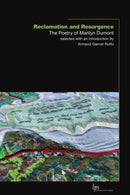Description
Cree/Métis poet Marilyn Dumont’s poetry has won provincial and national awards and this book is edited by Armand Garnet Ruffo who draws on his Ojibwe heritage for his writing.
Some thirty-five years ago Marilyn Dumont set about documenting her life as a young Métis woman and telling the story of her people, the Red River Métis, and, in the process, she has become a principal literary voice for the “Renaissance” of the Métis Nation. To understand Marilyn Dumont’s work is to understand Métis culture and history, that of a people who originated in the 17th century upon the meeting of the First Nations and the newcomers, the European voyageurs and cartographers who travelled along the great waterways of Turtle Island/ North America.
How does a Métis poet write about a country where its politicians and bureaucrats are honoured as national figures when they made family fortunes from confiscated Métis and First Nations lands? For Dumont, the answer to this question resides in telling the truth, about the present and the past. Through carefully crafted poems, Dumont takes the reader through a range of personal and historically connected experiences grounded in emotional truth. For Dumont, perception, like memory, is as much about the body as it is the mind, surfacing as visionary insight, which has become the hallmark of her poetry.
Reclamation and Resurgence contains poems selected from A Really Good Brown Girl, green girl dreams Mountains, from that tongued belonging, and The Pemmican Eaters, as well as previously uncollected poems, and includes an introduction by Armand Garnet Ruffo and an afterword, "Contradictory Co-existence," by Marilyn Dumont.
Some thirty-five years ago Marilyn Dumont set about documenting her life as a young Métis woman and telling the story of her people, the Red River Métis, and, in the process, she has become a principal literary voice for the “Renaissance” of the Métis Nation. To understand Marilyn Dumont’s work is to understand Métis culture and history, that of a people who originated in the 17th century upon the meeting of the First Nations and the newcomers, the European voyageurs and cartographers who travelled along the great waterways of Turtle Island/ North America.
How does a Métis poet write about a country where its politicians and bureaucrats are honoured as national figures when they made family fortunes from confiscated Métis and First Nations lands? For Dumont, the answer to this question resides in telling the truth, about the present and the past. Through carefully crafted poems, Dumont takes the reader through a range of personal and historically connected experiences grounded in emotional truth. For Dumont, perception, like memory, is as much about the body as it is the mind, surfacing as visionary insight, which has become the hallmark of her poetry.
Reclamation and Resurgence contains poems selected from A Really Good Brown Girl, green girl dreams Mountains, from that tongued belonging, and The Pemmican Eaters, as well as previously uncollected poems, and includes an introduction by Armand Garnet Ruffo and an afterword, "Contradictory Co-existence," by Marilyn Dumont.


